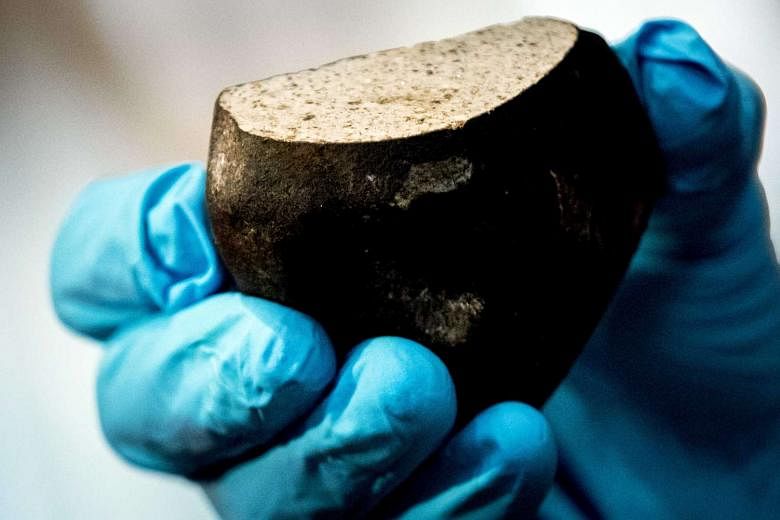THE HAGUE (AFP) - Dutch scientists on Monday (June 26) celebrated the rare discovery of meteorite in The Netherlands, which at 4.5-billion years old may hold clues to the birth of our solar system.
"Meteorites are very special because we do not have rocks of this age on earth," said geologist Leo Kriegsman from the Naturalis biodiversity centre in Leiden in a YouTube video marking the occasion.
The fist-sized meteorite, weighing about 500 grammes, crashed through the roof of a shed in the small town of Broek in Waterland, just north of Amsterdam, in January probably travelling at the speed of a high-velocity train.
It was discovered the next morning by the residents under a broken pile of wood from the roof, but despite an extensive search, no other fragments have been found in the area.
Even though meteor showers probably reach the northern European country every three to four years, the small space rocks are very hard to find as they can often end up in water, or peat-bogs or strewn on forest floors where they are hard to distinguish.
'VERY EXCITING'
This is only the sixth meteorite found in the past 200 years in The Netherlands, and the last such find dates back to 1990. So Kriegsman said it was "very exciting" when the home-owners contacted them about their find.
"We can learn from it what happened in the very beginning of the solar system when you had a stellar cloud that collapsed and minerals started to form, when planetoids started to form for the very first time," said Kriegsman.
"So it gives us information on what happened at the very beginning when the Earth was formed."
He estimated that the meteorite probably came from the region between Mars and Jupiter where there is a large asteroid belt with "a lot of rocks and small planets" flying around which sometimes fall out of their orbit.
The Leiden centre unveiled the meteorite on Monday, after carrying out extensive tests.
"We wanted to be 100 per cent sure of what kind of meteorite it was, so we needed to carry out some research first," Kriegsman told AFP.
This one has been identified as a type L6 chrondite, which is a fairly common kind.
But Kriegsman said all meteorites add to the scientific body of knowledge, and places like Antarctica and the Sahara desert where many have been found have boosted the science in recent years.
"There are many different types of meteorites, and it's always useful to have more meteorites even if they confirm the theory that we already have," he told AFP.
He now plans to carry out further research on the space rock, with the help of a masters student, to try to determine from what depth of an earlier planet it may have come.


